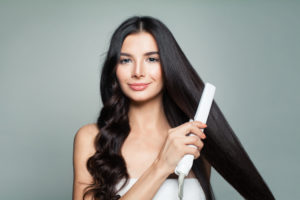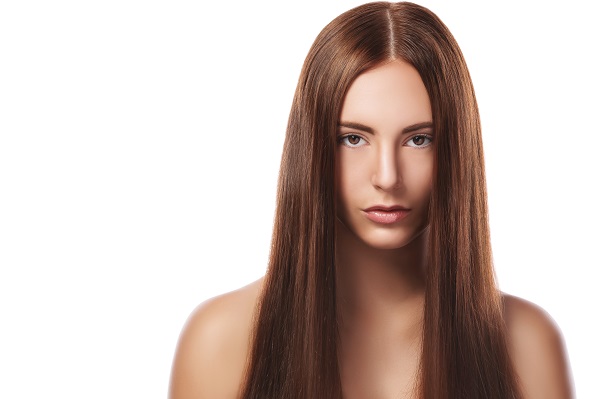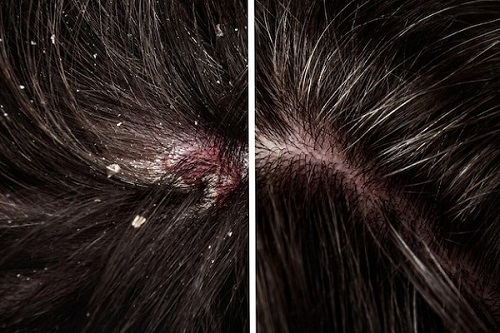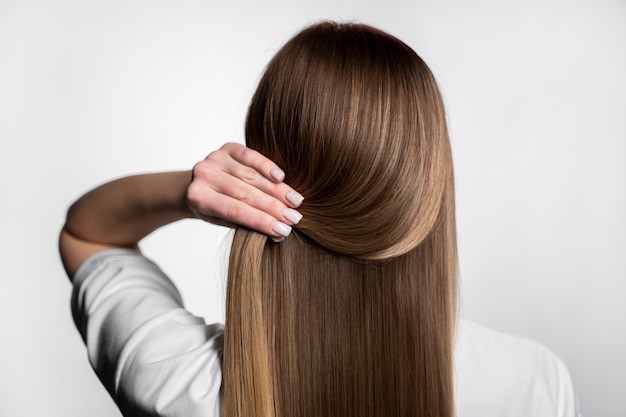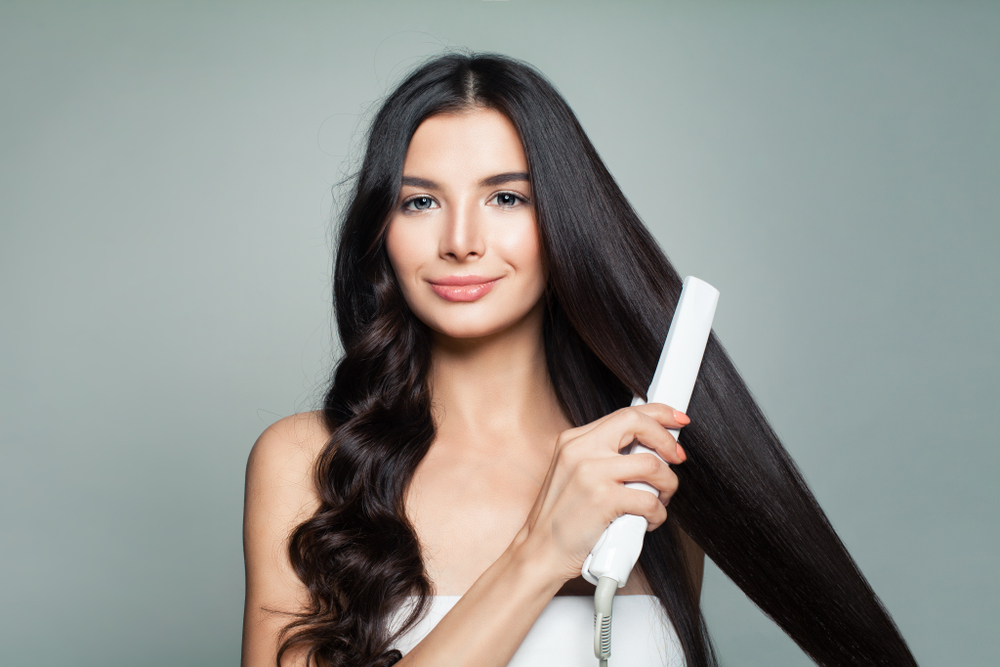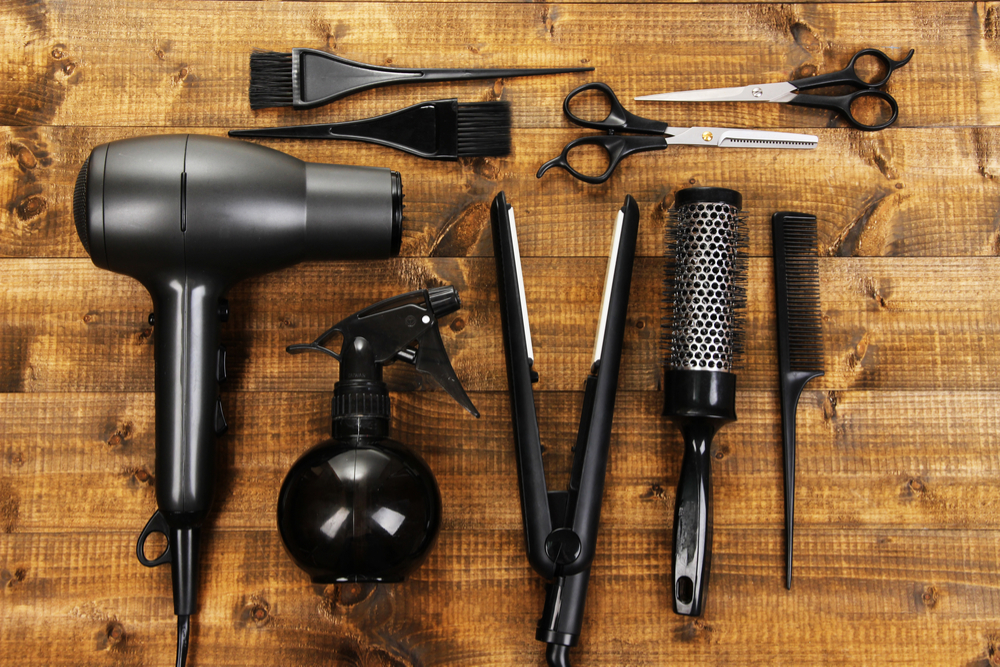Importance of Using the Right Hair Products
Maintaining healthy and vibrant hair is a common goal for many individuals. The key to achieving and sustaining this lies in the careful selection of hair products. The use of appropriate hair care items is crucial for various reasons, including promoting overall hair health, preventing damage, and enhancing the natural beauty of your locks. In this blog, we will delve into the significance of using the right hair products and how it can positively impact the look and feel of your hair.
Our focus in this blog will revolve around the dual aspects of protection and nourishment. Hair is constantly exposed to environmental factors, styling tools, and chemical treatments that can lead to damage over time. To counteract these effects, it’s essential to choose products that not only protect your hair but also nourish it from root to tip. We will explore a range of products designed to shield your hair from external stressors while providing the necessary nutrients to keep it healthy and resilient.
Preview of Key Factors to Consider When Selecting Hair Products
Selecting the right hair products can be a daunting task with the myriad of options available in the market. To simplify this process, we will discuss key factors to consider when choosing hair care items. From understanding your hair type and specific needs to deciphering product labels and ingredients, we will provide practical insights to empower you to make informed decisions. By the end of this blog, you will have a comprehensive understanding of how the right hair products can contribute to the overall well-being of your hair.
Join us on this journey as we explore the world of hair care and discover the transformative effects that the right products can have on your locks.
Understanding Your Hair Type
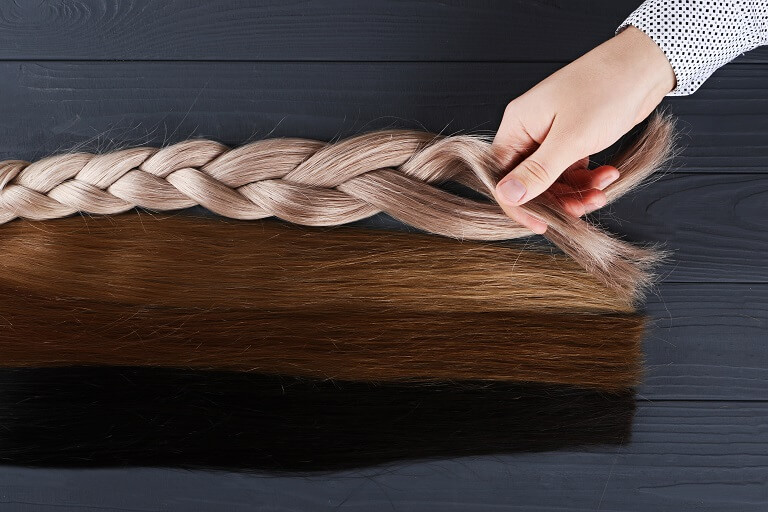
Straight, Wavy, Curly, Coily:
Hair comes in a variety of textures, ranging from straight to coily. Understanding your hair’s natural texture is the first step in selecting the right products. Straight hair tends to be sleek and smooth, while wavy hair has gentle bends. Curly hair forms defined curls, and coily hair has tight, spiral-like coils.
Fine, Medium, Coarse:
Hair thickness, often categorized as fine, medium, or coarse, is another important aspect. Fine hair is thinner and may lack volume, while medium hair falls in between. Coarse hair is thicker and can sometimes be more resistant to styling. Knowing your hair thickness helps in choosing products that provide the right level of conditioning and support.
How Hair Type Influences Product Selection?
Moisture Needs:
Each hair type has unique moisture requirements. For example, curly and coily hair types often require more moisture due to the natural bends and twists that can make it challenging for natural oils to travel down the hair shaft. On the other hand, straight hair may become easily weighed down by heavy, moisturizing products. Understanding your hair’s moisture needs is crucial for maintaining its health and vitality.
Styling Preferences:
Different hair types have distinct styling preferences. Straight hair may require products that offer smoothness and shine, while curly and coily hair may benefit from styling products that enhance and define curls. Understanding your styling preferences helps in selecting products that cater to your desired look and hold.
Identifying Your Hair Concerns
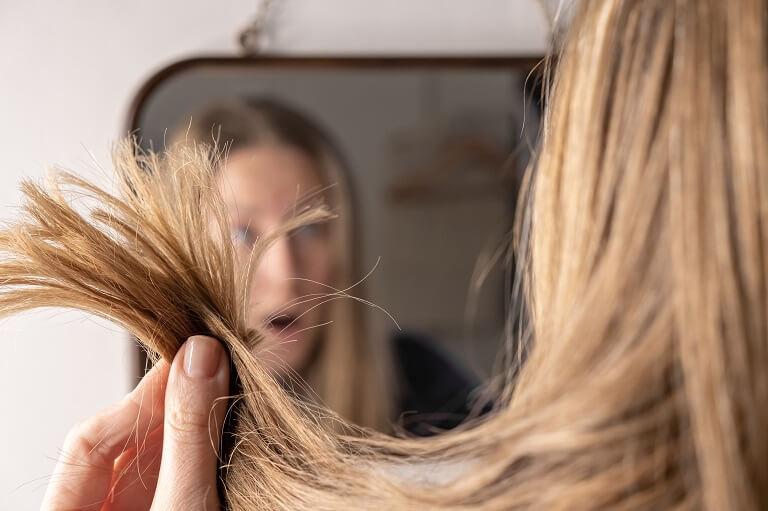
Dryness and Frizz:
Dryness and frizz are prevalent concerns, often caused by factors such as environmental conditions, heat styling, and chemical treatments. Dry hair lacks moisture, leading to a rough texture and increased susceptibility to frizz.
Damage and Breakage:
Hair damage can result from various sources, including excessive heat styling, chemical processing, and environmental stressors. Signs of damage include split ends, breakage, and a lack of overall vitality.
Scalp Issues (Dandruff, Sensitivity):
Scalp health is integral to overall hair well-being. Issues such as dandruff and sensitivity can impact the scalp, leading to discomfort and potential hair problems. Understanding and addressing these concerns are crucial for maintaining a healthy foundation for your hair.
Tailoring Product Choices to Address Specific Concerns
Ingredients for Hydration:
For dryness and frizz, look for products containing hydrating ingredients such as hyaluronic acid, glycerin, and natural oils like argan oil or coconut oil. These ingredients help restore moisture balance, leaving your hair soft, smooth, and more manageable.
Repairing Damaged Hair:
If your hair is damaged and prone to breakage, focus on products with reparative ingredients like keratin, amino acids, and biotin. These components strengthen the hair shaft, repair damage, and promote healthier, more resilient hair.
Soothing the Scalp:
To address scalp issues, opt for products with soothing ingredients like aloe vera, tea tree oil, or chamomile. These ingredients can help alleviate scalp irritation, reduce dandruff, and create a healthier environment for hair growth.
Understanding Product Ingredients
- Key Ingredients for Nourishment: Familiarizing yourself with key nourishing ingredients is essential for selecting effective hair products. Look for ingredients such as:
- Natural Oils: Coconut oil, argan oil, and jojoba oil provide hydration and promote shine.
- Proteins: Keratin, collagen, and amino acids strengthen the hair shaft.
- Vitamins: Biotin, vitamin E, and panthenol contribute to overall hair health.
- Harmful Ingredients to Avoid (Sulfates, Parabens):
- Some ingredients may have adverse effects on your hair and health. Common ones to avoid include:
- Sulfates: Harsh detergents that can strip hair of natural oils, leading to dryness.
- Parabens: Preservatives that have been associated with potential health risks and may cause scalp irritation.
Importance of Allergen Awareness
- Identifying Potential Allergens in Hair Products:
- Allergens in hair products can cause adverse reactions. Be vigilant about the following:
- Fragrances: Artificial fragrances may contain allergens. Look for products labeled “fragrance-free” if you have sensitivities.
- Preservatives: Ingredients like formaldehyde and its releasers may cause allergies in some individuals.
- Dyes: Hair colorants and dyes can contain allergenic substances.
- Alternatives for Sensitive Individuals:
- If you have sensitivities, opt for products with gentle, hypoallergenic formulations. Consider:
- Natural and Organic Products: These often contain fewer synthetic chemicals.
- Fragrance-Free Options: Products without added fragrances reduce the risk of irritation.
- Allergy Testing: Patch tests can help identify potential allergens before using a product extensively.
Essential Products for a Complete Hair Care Routine.
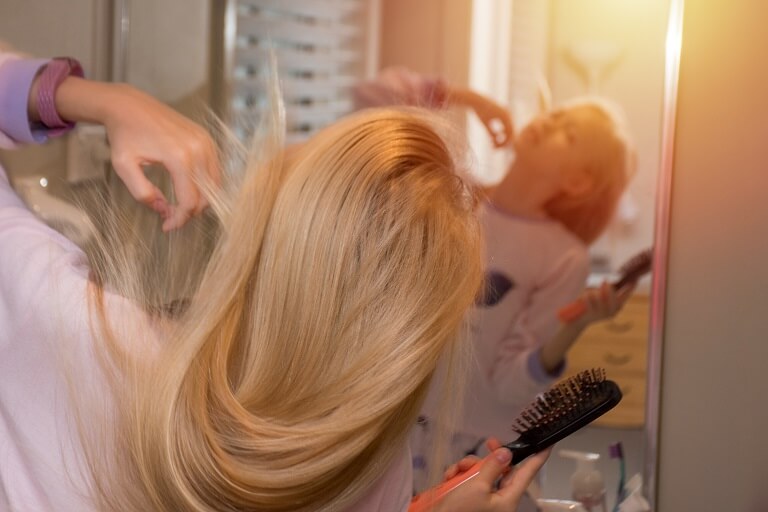
Choosing the Right Shampoo for Your Hair Type:
Different hair types require specific formulations. For instance:
- Moisturizing Shampoos: Ideal for dry or curly hair, these add hydration.
- Volumizing Shampoos: Suitable for fine hair, providing lift and body.
- Clarifying Shampoos: Remove product buildup and excess oil, best for oily hair.
- Consider sulfate-free options to prevent excessive drying, especially for those with curly or color-treated hair.
Frequency of Shampooing:
The frequency of shampooing depends on your hair type and lifestyle. While some may benefit from daily washing, others with drier hair may find every 2-3 days more suitable. Experiment to find the frequency that maintains a balance between cleanliness and natural oils.
Conditioning is crucial for maintaining softness, detangling, and overall manageability. It helps to:
- Restore Moisture: Especially important for dry or damaged hair.
- Enhance Shine: Leaves hair looking healthy and vibrant.
- Prevent Breakage: Improves elasticity and reduces the risk of breakage.
Selecting a Conditioner Based on Hair Needs:
- Hydrating Conditioners: For dry or frizzy hair, providing extra moisture.
- Repairing Conditioners: Containing proteins for damaged hair.
- Lightweight Conditioners: Ideal for those with fine hair to avoid weighing it down.
Deep Conditioning Treatments
Incorporating Weekly or Monthly Treatments:
- Weekly: Especially for dry or damaged hair.
- Monthly: For maintenance and preventive care.
DIY Deep Conditioning Options:
- Create nourishing treatments at home using natural ingredients:
- Coconut Oil Mask: Excellent for hydration and reducing protein loss.
- Avocado and Honey Treatment: Rich in vitamins and moisture.
Styling Products for Protection
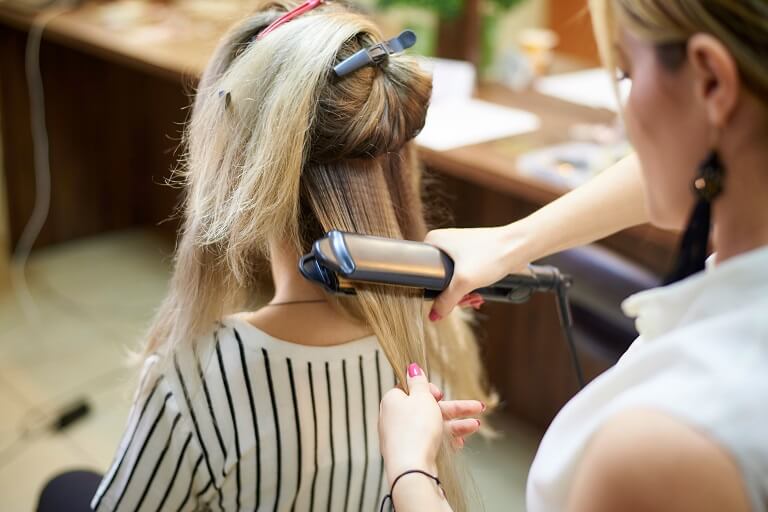
Heat Protectants
Heat styling tools like flat irons, curling irons, and blow dryers can cause damage to the hair’s cuticle, leading to dryness, breakage, and split ends. Using a heat protectant forms a barrier that minimizes damage, preserving the hair’s integrity and health.
How to Choose an Effective Heat Protectant?
- High Heat Tolerance: Ensure the product can withstand the temperature of your styling tools.
- Moisturizing Properties: Opt for formulations that add moisture to counteract the drying effects of heat.
- Spray or Serum Formulas: Choose a format that evenly distributes the product for thorough coverage.
- Understanding the Impact of UV Rays on Hair: UV rays can damage the hair’s proteins, weaken its structure, and fade color-treated hair. UV exposure can lead to dryness, frizz, and overall loss of vitality.
- Hair Products with Built-in UV Protection: Choose styling products, leave-in conditioners, or finishing sprays that contain UV filters. These products create a protective shield against harmful sun rays, safeguarding your hair from environmental damage.
Anti-Frizz Serums and Products
Taming Frizz and Promoting Smoothness:
- Smoothing Cuticles: Enhancing the hair’s texture for a sleeker appearance.
- Adding Shine: Reflecting light for a glossy finish.
- Reducing Static: Minimizing flyaways and unruly strands.
Tips for Applying Anti-Frizz Products:
- Apply anti-frizz products on damp, towel-dried hair for even distribution.
- Use a small amount to avoid product buildup.
- Focus on the mid-length to ends, where frizz is often more pronounced.
Product Application Tips
Shampoo:
- Wet hair thoroughly before applying shampoo.
- Use a quarter-sized amount for short to medium hair and slightly more for longer hair.
- Massage the scalp with your fingertips to stimulate circulation and ensure a thorough cleanse.
- Focus on the roots and let the lather cleanse the rest of the hair as you rinse.
Conditioner:
- Apply conditioner to the mid-length and ends, avoiding the scalp.
- Use a wide-tooth comb to distribute the conditioner evenly and detangle hair.
- Leave the conditioner on for the recommended time before rinsing.
Applying Styling Products:
- Spray or apply evenly to damp hair before using heat styling tools.
- Comb through to distribute the product evenly.
UV Protection and Anti-Frizz Products:
- Apply these products evenly through the lengths of dry or damp hair.
- Concentrate on areas prone to frizz or exposed to sunlight.
Dos and Don’ts for Product Application
- Do: Use clarifying shampoos periodically to remove residue.
- Don’t: Overuse styling products, as this can lead to buildup and weigh down the hair.
- Not Overloading the Hair with Products:
- Do: Start with small amounts and add more if needed.
- Don’t: Apply excessive amounts of product in one go. You can always add more if necessary, but it’s challenging to remove excess.
Creating a Personalized Hair Care Routine
Understanding Your Hair Type and Concerns:
Evaluate your hair type (straight, wavy, curly, coily) and specific concerns (dryness, damage, frizz). Choose products tailored to address these unique characteristics.
- Identifying Key Products: Build a routine around essential products such as a suitable shampoo, conditioner, and styling products like heat protectants or anti-frizz serums. Consider incorporating deep conditioning treatments on a regular basis.
- Consistency in Product Usage: Use products consistently for a few weeks before assessing their effectiveness. Hair care is often a gradual process, and consistent use allows the products to work optimally.
- Adjusting Based on Lifestyle: Consider your lifestyle when building your routine. If you frequently use heat styling tools, prioritize products that offer heat protection. For those with an active lifestyle, choose products that can withstand sweat and environmental exposure.
Adapting the Routine to Different Seasons and Climates
- Winter: Hair may require extra moisture to combat dryness caused by indoor heating.
- Summer: UV protection and lightweight products become more crucial to shield hair from the sun without weighing it down.
- Climate Considerations: Adjust your routine based on the climate of your location. In humid climates, anti-frizz products may be more important, while those in drier climates may need to focus on hydration.
- Hydration in Changing Climates: In dry climates, consider using leave-in conditioners or oils to maintain hydration. In humid climates, lightweight products can help control frizz without adding excessive moisture.
- Protective Styling: Consider protective styles, such as braids or buns, during extreme weather conditions to minimize exposure to the elements.
Conclusion:
In closing, remember that protection and nourishment are the pillars of a successful hair care routine. By choosing hair products that cater to your specific needs, incorporating protective measures against environmental factors, and consistently nourishing your locks, you embark on a journey towards maintaining hair that not only looks stunning but is also strong and resilient.
Take pride in the care you invest in your hair, and let it be a reflection of your overall well-being. With the knowledge gained from this blog, you are equipped to make informed decisions and create a customized hair care routine that promotes the health and beauty of your unique tresses. Here’s to vibrant, luscious hair and the confidence that comes with it!

